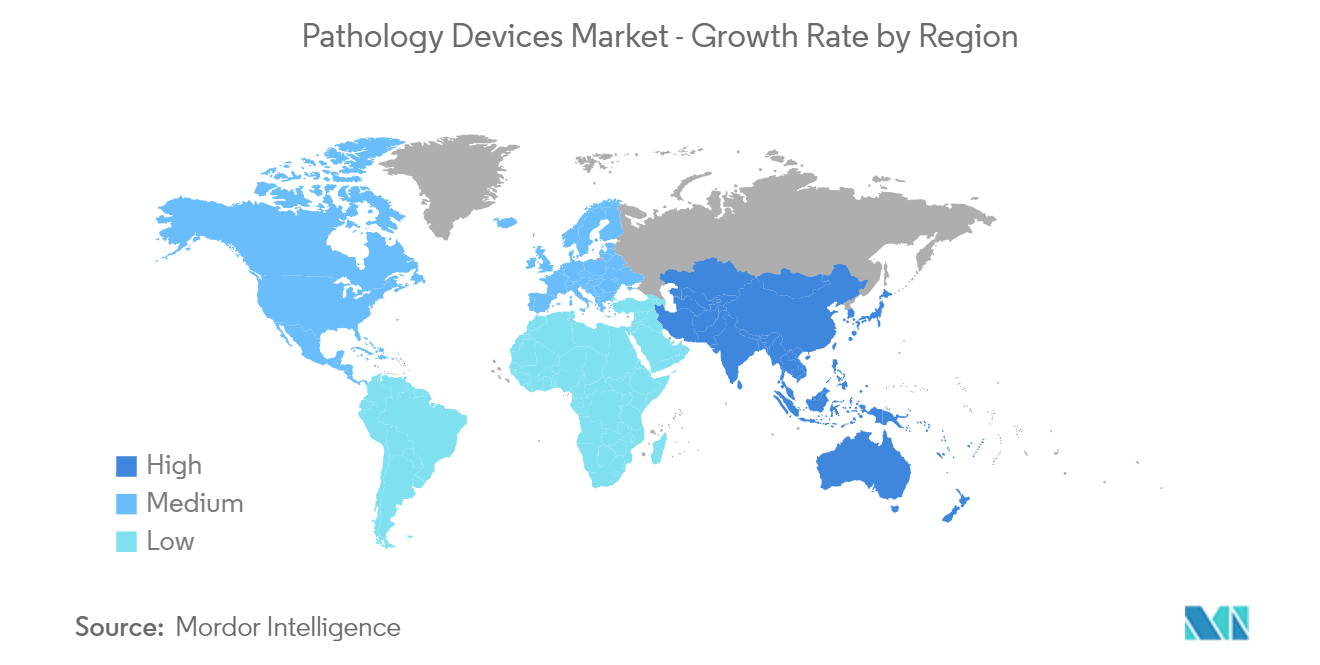Market Trends of Pathology Devices Industry
Molecular Diagnostics Segment is Expected to Hold Significant Market Share Over the Forecast Period
- Molecular diagnostic devices are used to analyze biological markers in the genome and proteome to detect pathogens or mutations. Based on the technology, molecular diagnostic devices can be segmented into chips and microarrays, mass spectroscopy, next-generation sequencing (NGS), polymerase chain reaction (PCR)-based methods, cytogenetics, and molecular imaging. Factors such as large outbreaks of bacterial and viral epidemics, increasing demand for point-of-care diagnostics, and rapidly evolving technology are driving the growth of the molecular diagnostics segment.
- The growing burden of cancer, cardiovascular diseases, brain tumors, and others is the key factor driving the segment's growth. For instance, according to the statistics published by the British Heart Foundation, in January 2022, more than 7.6 million people were living with cardiovascular diseases in the United Kingdom in 2021.
- Also, as per 2022 statistics published by the National Brain Tumor Society, approximately 88,970 people were diagnosed with a primary brain tumor in the United States in 2022. Thus, the high prevalence of heart diseases and brain tumors among the population is anticipated to propel the demand for molecular diagnosis, which improves diagnosis accuracy, allows for predictive prognosis, and enables target identification. This is expected to fuel the segment growth over the forecast period.
- Furthermore, the increasing company focus on developing technologically advanced products in molecular diagnostics and rising new product launches contributes to market growth. For instance, in March 2022, Mylab Discovery Solutions launched an entire range of routine diagnostic kits and devices, for immunology, biochemistry, and hematology, in conventional and point-of-care formats. This product line expansion assists the labs in using the company's devices and reagent kits to do all routine tests such as liver panels, cardiac profiles, urine panels, hormone panels, fever panels, kidney function tests, cancer markers, and other tests.
- Therefore, owing to the factors such as the high burden of heart diseases and brain tumors, growing demand for precision medicine as well as rising product launches, the studied segment is expected to grow over the forecast period.

North America is Expected to Have the Significant Market Share Over the Forecast Period
- North America is expected to hold a significant market share in the pathology devices market, owing to the rising prevalence of infectious and chronic diseases, better healthcare infrastructure, and the technological advancements of pathological devices.
- The increasing number of chronic and infectious diseases in the region increases the demand for early detection and diagnosis of the condition, which in turn is anticipated to fuel the demand for pathological testing, thereby boosting the market growth. For instance, according to 2023 statistics published by ACS, about 1,958,310 new cancer cases are projected to be diagnosed in the United States in 2023.
- In addition, from the same source, 1,63,020 new cases of colorectal cancer, followed by 2,38,340 cases of lung and bronchus, 297,790 breast cancer, and 288,300 prostate cancer, are expected to be diagnosed in the United States in 2023. Also, as per 2022 data published by CDC, about 12.1 million people in the United States are expected to have atrial fibrillation in 2030. Thus, the rising burden of breast cancer and heart disease cases among the population is anticipated to increase the demand for diagnostic tests for the early detection of cancer, thereby propelling market growth.
- Furthermore, the increasing number of new product launches in the region increases the availability of products and test kits, which is also expected to boost market growth over the forecast period. For instance, in June 2021, Thermo Fisher Scientific Inc. launched TaqPath, a new CE-IVD-marked fast PCR combo kit 2.0, to detect active SARS-CoV-2 infection.
- Also, in March 2021, MatMaCorp launched a new handheld device, MY Real-Time Analyzer (MYRTA), which can carry out polymerase chain reaction (PCR) amplification and real-time fluorescent detection. Therefore, due to the aforementioned factors, such as the high burden of cancer and heart disease among the population, increasing company activities, and the growing number of pathological labs in the region, the studied market is expected to grow over the forecast period.


